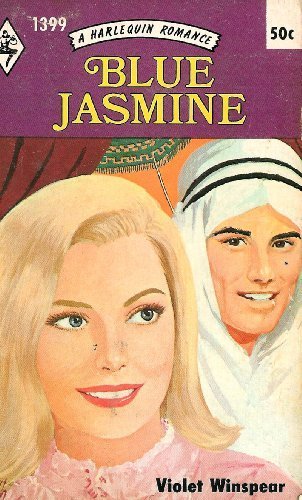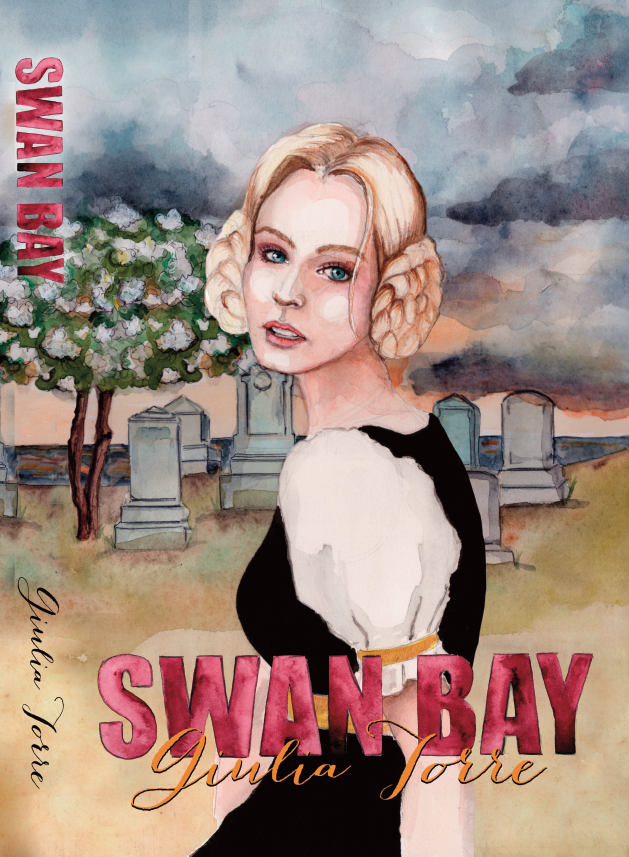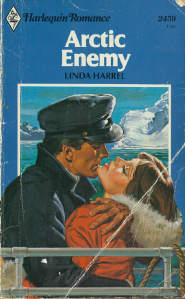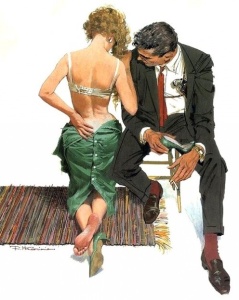
artist, Robert McGinnis
Did you know they stopped counting?
The last time anyone counted the number of romance readers in America was 2005, when marketing research group Corona Insights conducted a nationwide telephone survey for the Romance Writers Association (RWA).
The conclusion was that in that year 64.6 million Americans read at least one romance novel. In 2002, it was estimated at 51.1 million romance readers in America. In 1998, 41 million readers.
Ten years later, I predict that number has increased, based on the rise of self-publishing, the advent of the eBook, and the explosion of the erotica market. It’s been a big decade for reading in general, and romance has been a principal in the revolution.
Corona’s figures at the time were extrapolated by a definition of romance that adapted to readers. According to Kevin Raines, the CEO and founder of Corona who worked on the 2005 survey, although RWA had a strict definition of ‘romance’, survey respondents were allowed to self-identify the genre.
This still makes sense to me. What’s triumphant and pleasurable to some is not to others. If romance readers have learned one thing from their reading experience, it’s this.
So how do we extrapolate new numbers without cold-calling 1,200 Americans?
From 1998 to 2005, according to Corona’ s figures, the US population of romance readers saw an average annual 8% growth, a number too large to apply going forward at liberty.
In fact, based on revenue alone, RWA claimed in 2005 that romance fiction generated $1.4 billion in sales. However, that reported number has since dipped, with RWA reporting $1.08 billion in revenue in 2013, a 22.8% drop.
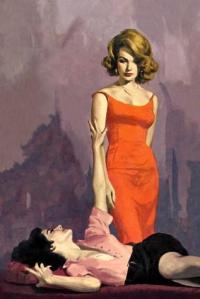
Robert Maguire, artist, I Prefer Girls
But it’s likewise not feasible to calculate the number of readers from the amount of money spent.
Perhaps this could have been possible when Harlequin dominated the market with paperbacks at 60 cents a copy. But, with the rise of both digital publishing and indie romance writers, and the birth of 99 cent and free marketing, any new calculation of the number of romance readers must take into account the format of the books we read — print, digital, or audio — and by extension, how much we spend.
RWA now also reports the frequency of consumption. In the first quarter of 2014, according to the Nielsen Romance Buyer Survey, 25.5% of readers read more than one book a week. The algorithm designed to extrapolate the number of romance readers with all these variables would be muddy indeed.
Statisticians counting gun owners seem more inclined to make a reckoning.
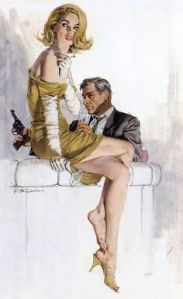
artist, Robert McGinnis
Guns are a lot like romance novels. People advocate on their behalf. Collect them. Buy them with variable frequency. Sometimes lie about the number they own. And, like romance novels, most guns don’t need to be registered.
Somehow, in spite of these vagaries, credible numbers are reported.
According to University of Chicago’s General Social Survey, the number of people who reported having a gun in their home in the 1970s averaged about 50 percent, the 1980s averaged 48 percent, the 1990s at 43 percent and 35 percent in the 2000s. Now, numbers are being reported at an all-time low of 30%. By my count, that’s 72.8 million American adults.
(I removed all minors from the calculation, because until they’re 18, they can’t vote, drink, or complete a Gallup poll. Yes, I know. They’re gun-owners. But they also read romance novels at as fast a clip as adults, so the populations cancel each other out.)
Based on the most recent numbers we have, and the arguable trend upwards in romance consumption and the reported trend downward in gun ownership, romance readers by now may actually outnumber gun owners.
That’s good news.
For centuries, moralists have cautioned women against reading too many romance novels for fear that we’ll all begin to love one another a little too freely.

Titillated by reading. Artist unknown.
If you haven’t read Charlotte Lennox’s The Female Quixote, try it as an example. And then the preface or front matter of any of the “seduction novels” of the 18th century. For something more contemporary, try this New Republic article, which suggests that romance readers are “bathetic and bromidic and brain dead”. The free love described is not the ruin of virgins by rakes, rogues and scoundrels. Ironically, it’s the plight of men this author now laments, and their “ninety minutes of torture” by female, middle-class (oh?) partners titillated by smut.
I’m on board with both logic statements. Romance leads to sex; guns lead to violence.
I advise therefore that all of us bathetic, bromidic and brain dead Americans keep reading until we can say with certainty the number of romance readers surpasses the number of gun owners.
Americans now choked by violence will breathe more easily, albeit with a little hitch and gasp of pleasure.

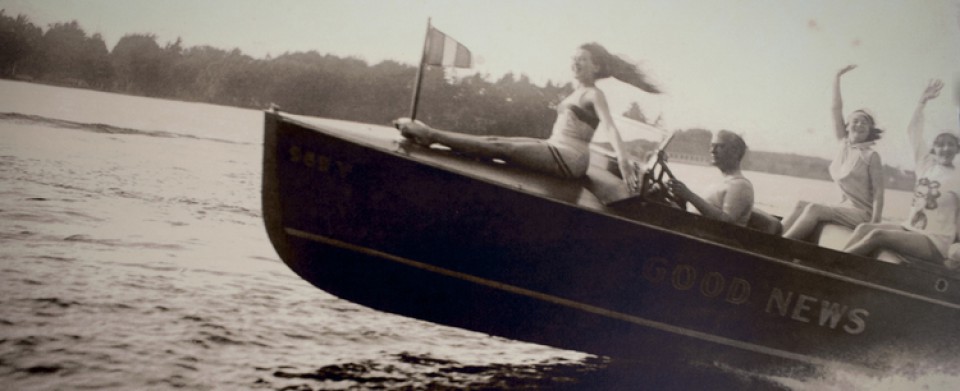
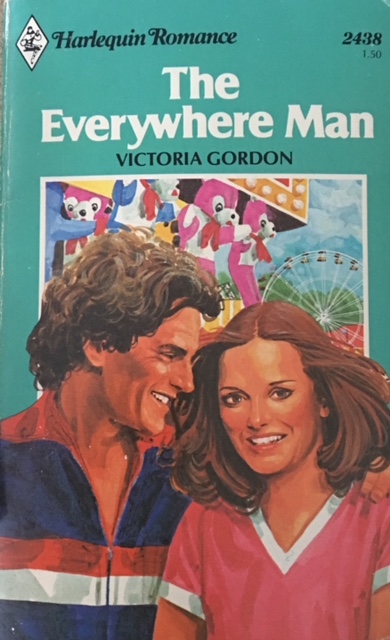
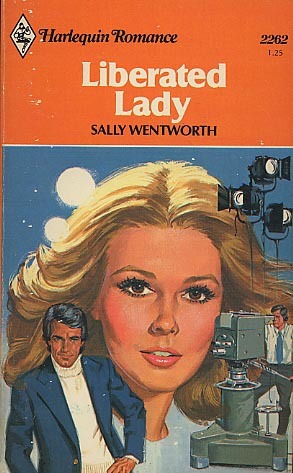 This is science folks. And a romance novel from 1979 titled Liberated Lady…? It could be the motherlode. The size of the TV studio camera on the cover screams
This is science folks. And a romance novel from 1979 titled Liberated Lady…? It could be the motherlode. The size of the TV studio camera on the cover screams 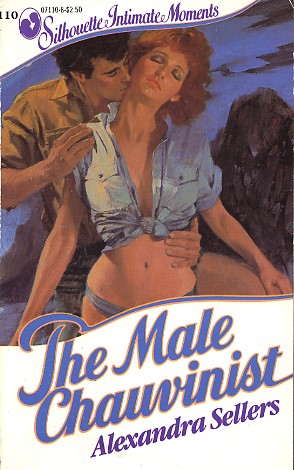
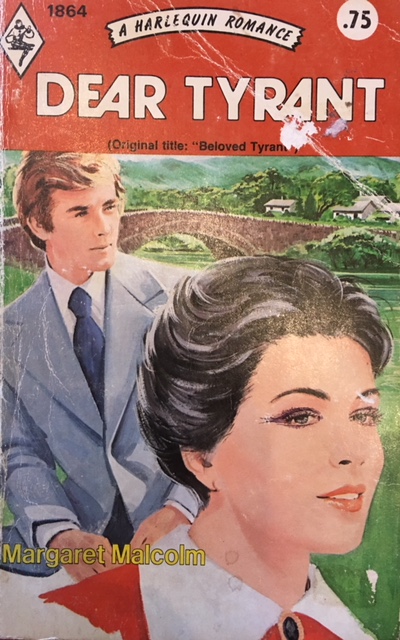
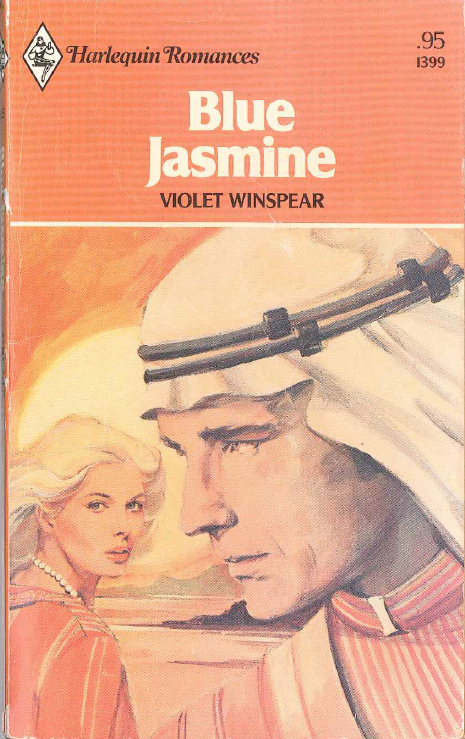 E(dith) M(aude) Hull’s (1919) The Sheik is, in fact, an even surer ringer for the romance canon (again,
E(dith) M(aude) Hull’s (1919) The Sheik is, in fact, an even surer ringer for the romance canon (again, 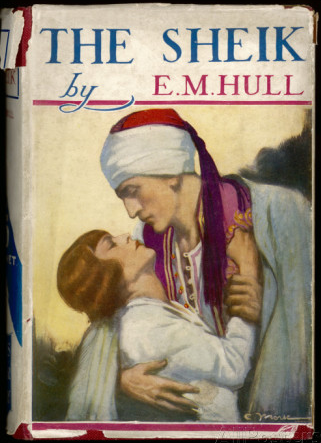 Both The Sheik and Blue Jasmine present typical Winspear heroes. If you remember,
Both The Sheik and Blue Jasmine present typical Winspear heroes. If you remember, 